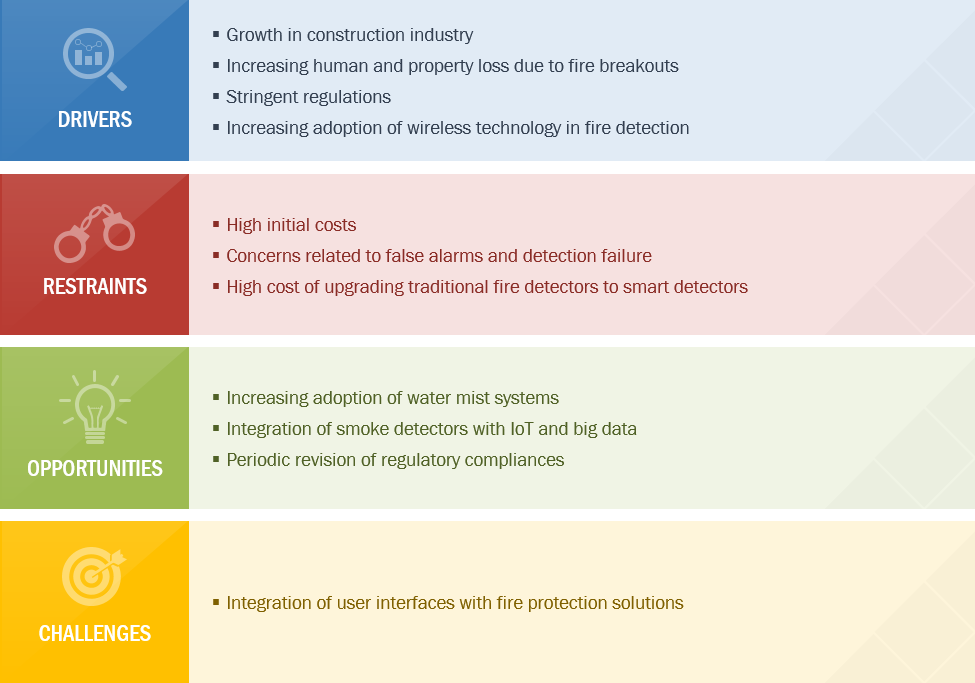Fire Protection System Quadrant Report
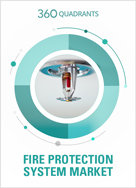
Table of Contents
1 Introduction
1.1 Market Definition
1.1.1 Inclusions and Exclusions
2 Market Overview
2.1 Introduction
2.2 Market Dynamics
Figure 1 Fire Protection System Market: Drivers, Restraints, Opportunities, and Challenges
2.2.1 Drivers
2.2.1.1 Growth in Construction Industry
2.2.1.2 Increasing Human and Property Loss Due to Fire Breakouts
2.2.1.3 Stringent Regulations
2.2.1.4 Increasing Adoption of Wireless Technology in Fire Detection
2.2.2 Restraints
2.2.2.1 High Initial Costs
2.2.2.2 Concerns Related to False Alarms and Detection Failure
2.2.2.3 High Cost of Upgrading Traditional Fire Detectors to Smart Detectors
2.2.3 Opportunities
2.2.3.1 Increasing Adoption of Water Mist Systems
2.2.3.2 Integration of Smoke Detectors With IoT and Big Data
2.2.3.3 Periodic Revision of Regulatory Compliances
2.2.4 Challenges
2.2.4.1 Integration of User Interfaces With Fire Protection Solutions
2.3 Value Chain Analysis
Figure 2 Value Chain Analysis: Major Value Addition During Manufacturing and System Integration Stages
2.4 Latest Trends in FPS Market
2.4.1 Internet of Things (IoT)
2.4.2 Cloud-Based Solutions
2.4.3 Video Image Smoke and Flame Detection Systems
2.5 Codes and Standards Related to Fire Protection Systems
Table 1 Codes and Standards Related to Fire Detection
Table 2 Codes and Standards Related to Fire Suppression
2.6 Impact of Covid-19 on Fire Protection System Market
2.6.1 What is Covid-19?
2.6.2 Impact on Fire Protection System
3 Company Evaluation Quadrant
3.1 Visionary Leaders
3.2 Dynamic Differentiators
3.3 Innovators
3.4 Emerging Companies
Figure 3 Fire Protection System Market (Global) Company Evaluation Quadrant
4 Competitive Landscape
4.1 Overview
Figure 4 Product Launches Emerged as Key Growth Strategy Adopted By Players in Fire Protection System Market From 2017 to 2020
4.2 Ranking of Players in Fire Protection System Market
Figure 5 Ranking of Top 5 Players in Fire Protection System Market, 2019
4.3 Competitive Situations & Trends
Figure 6 Product Launches was the Key Strategy Adopted By Players in Fire Protection System Market From 2017 to 2020
4.3.1 Product Launches
Table 3 Product Launches, 2019—2020
4.3.2 Contract and Collaboration
Table 4 Contract and Collaboration, 2018–2019
4.3.3 Acquisitions
Table 5 Acquisitions, 2017–2020
4.3.4 Expansion
Table 6 Expansion, 2017–2018
5 Company Profiles
5.1 Key Players
5.1.1 Johnson Controls
5.1.1.1 Business Overview*
Figure 7 Johnson Controls: Company Snapshot
5.1.1.2 Products/Services/Solutions Offered*
5.1.1.3 Recent Developments*
5.1.1.4 SWOT Analysis*
5.1.1.5 MnM View*
(*Above sections are present for all of below companies)
5.1.2 United Technologies
Figure 8 United Technologies: Company Snapshot
5.1.3 Honeywell
Figure 9 Honeywell: Company Snapshot
5.1.4 Siemens
Figure 10 Siemens: Company Snapshot
5.1.5 Halma
Figure 11 Halma: Company Snapshot
5.1.6 Robert Bosch
Figure 12 Robert Bosch: Company Snapshot
5.1.7 Hochiki
Figure 13 Hochiki: Company Snapshot
5.1.8 Gentex
Figure 14 Gentex: Company Snapshot
5.1.9 Minimax Viking
5.1.10 Securiton AG
6 Appendix
6.1 Other Significant Players
6.1.1 Encore Fire Protection
6.1.2 Fire Suppression Limited
6.1.3 Schrack Seconet AG
6.1.4 Napco Security Technologies
6.1.5 VFP Fire Systems
6.2 Fire Protection Service Companies
6.2.1 S&S Fire Suppression Systems
6.2.2 Fireline Corporation
6.2.3 ORR Protection
6.2.4 Argus Fire Protection Company Ltd
6.2.5 Firetrol Protection Systems, Inc.
6.3 Methodology
The report identifies and benchmarks the Fire Protection System market leaders such as Johnson Controls (Ireland), United Technologies (US), Honeywell (US), Siemens (Germany), and Halma (UK) and evaluates them on the basis of business strategy excellence and strength of product portfolio within the Fire Protection System market ecosystem, combining inputs from various industry experts, buyers, and vendors, and extensive secondary research including annual reports, company press releases, investor presentations, free and paid company databases. They are rated and positioned on a 2x2 matrix, called as ‘Company Evaluation Quadrant,’ and identified as Visionary Leaders, Dynamic Differentiators, Innovators, or Emerging companies.
SAMPLES:
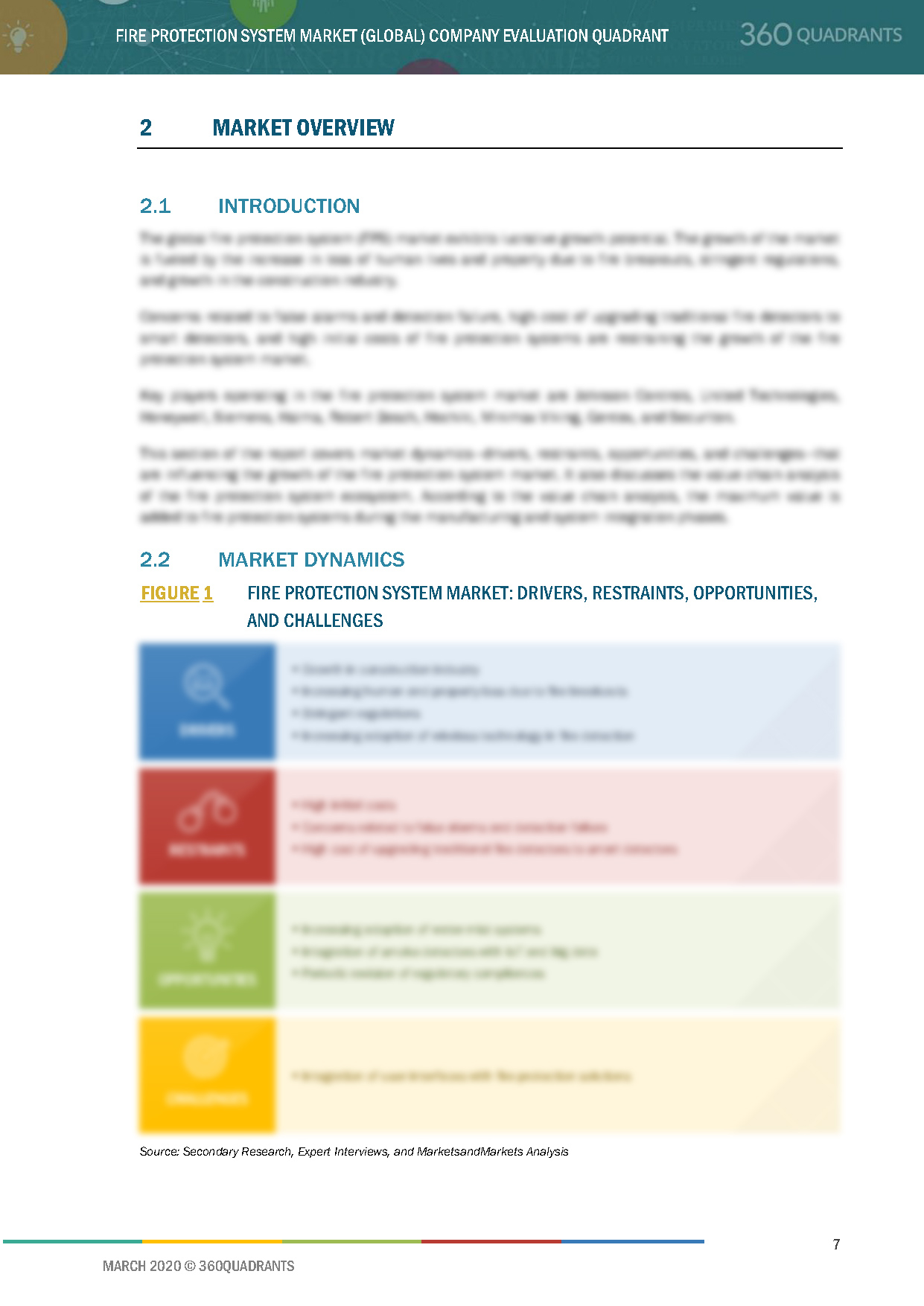
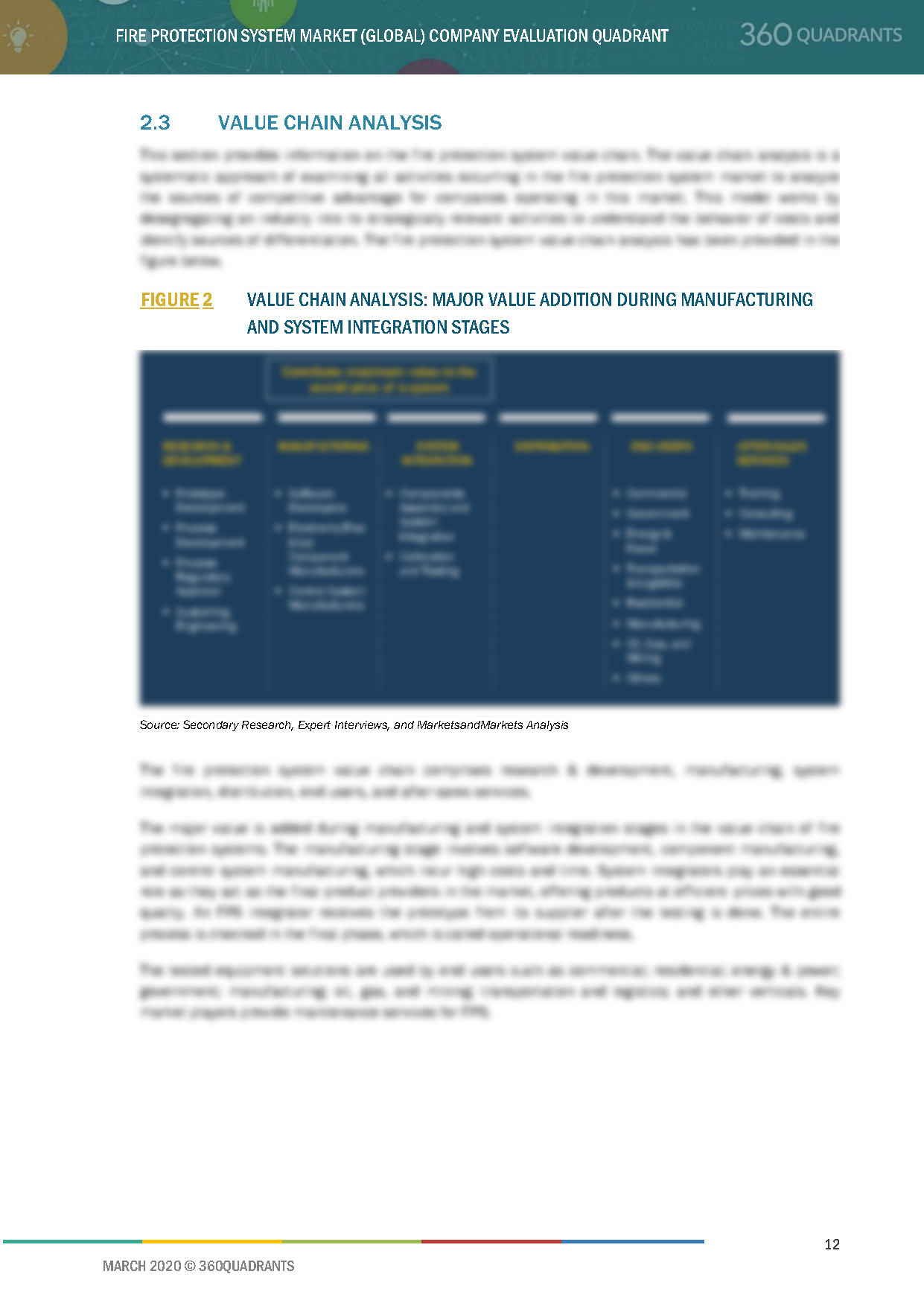
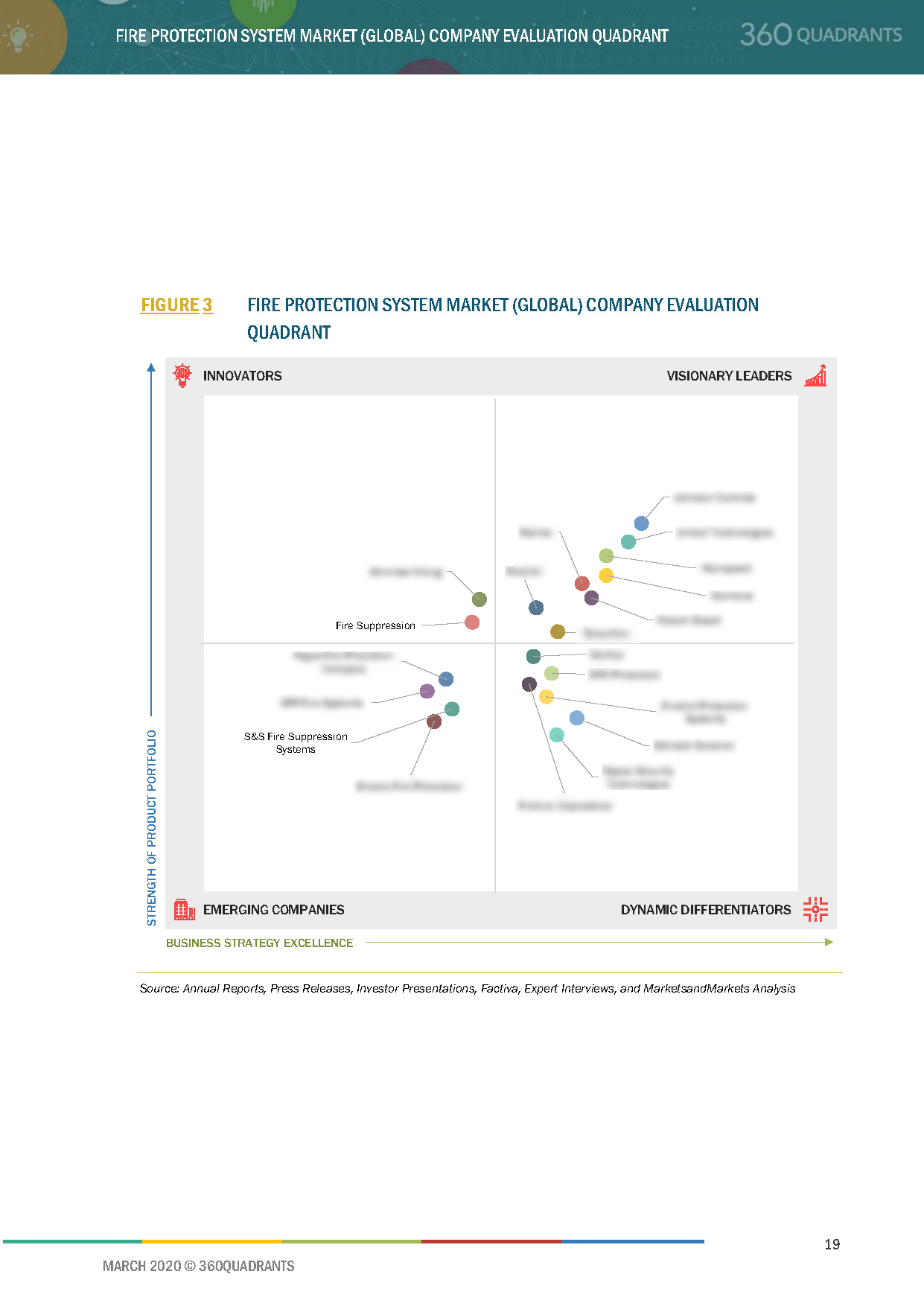
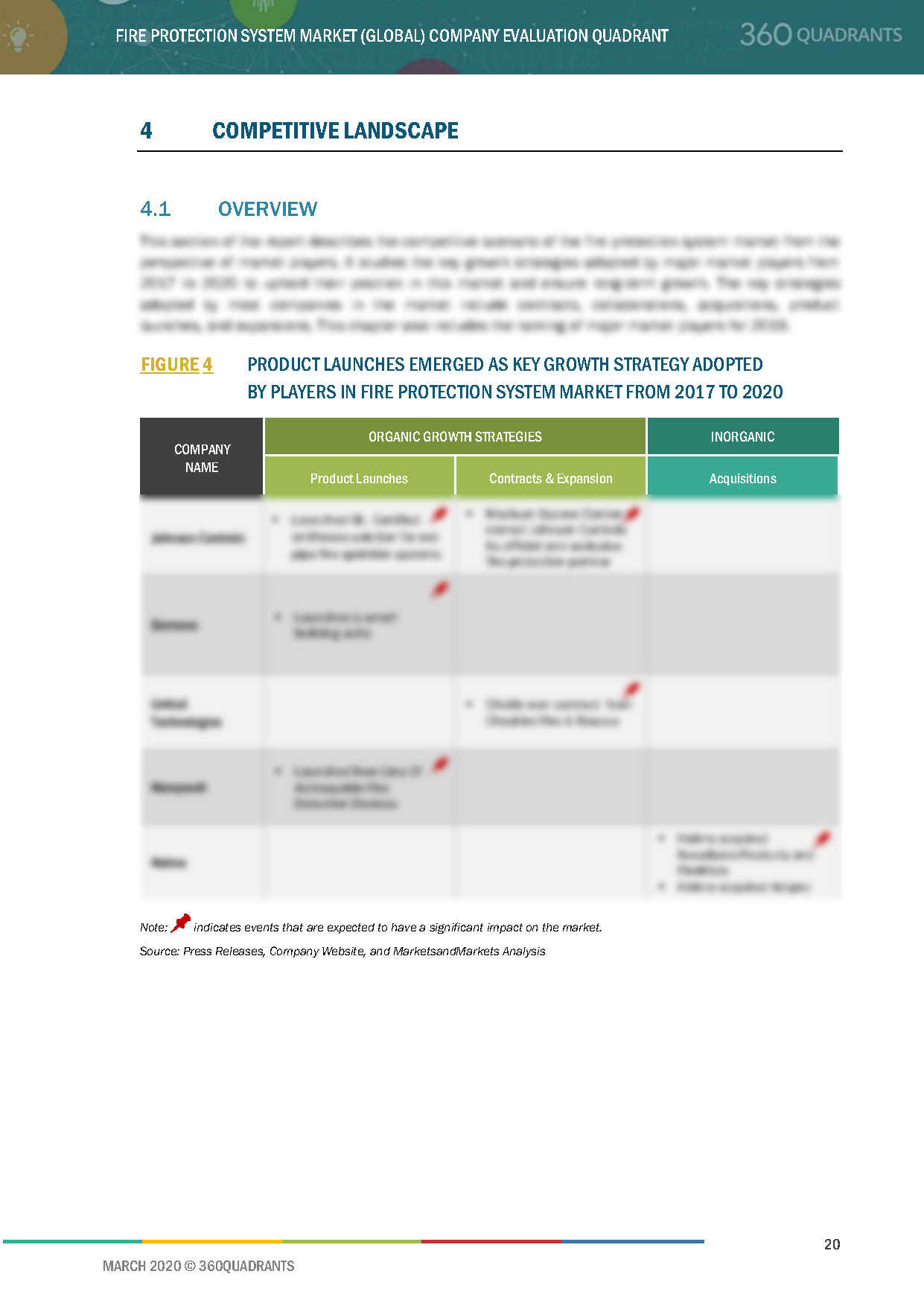
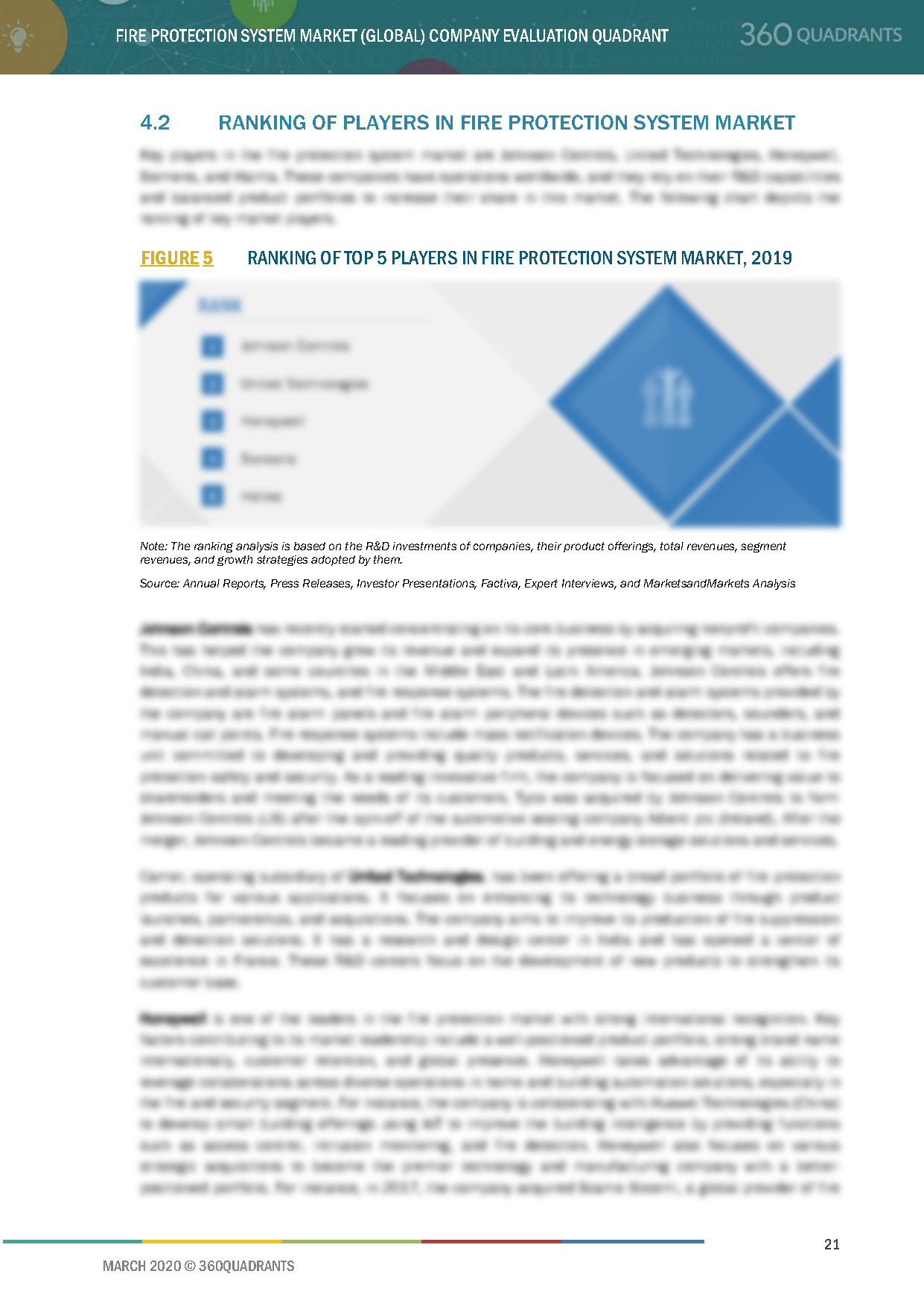
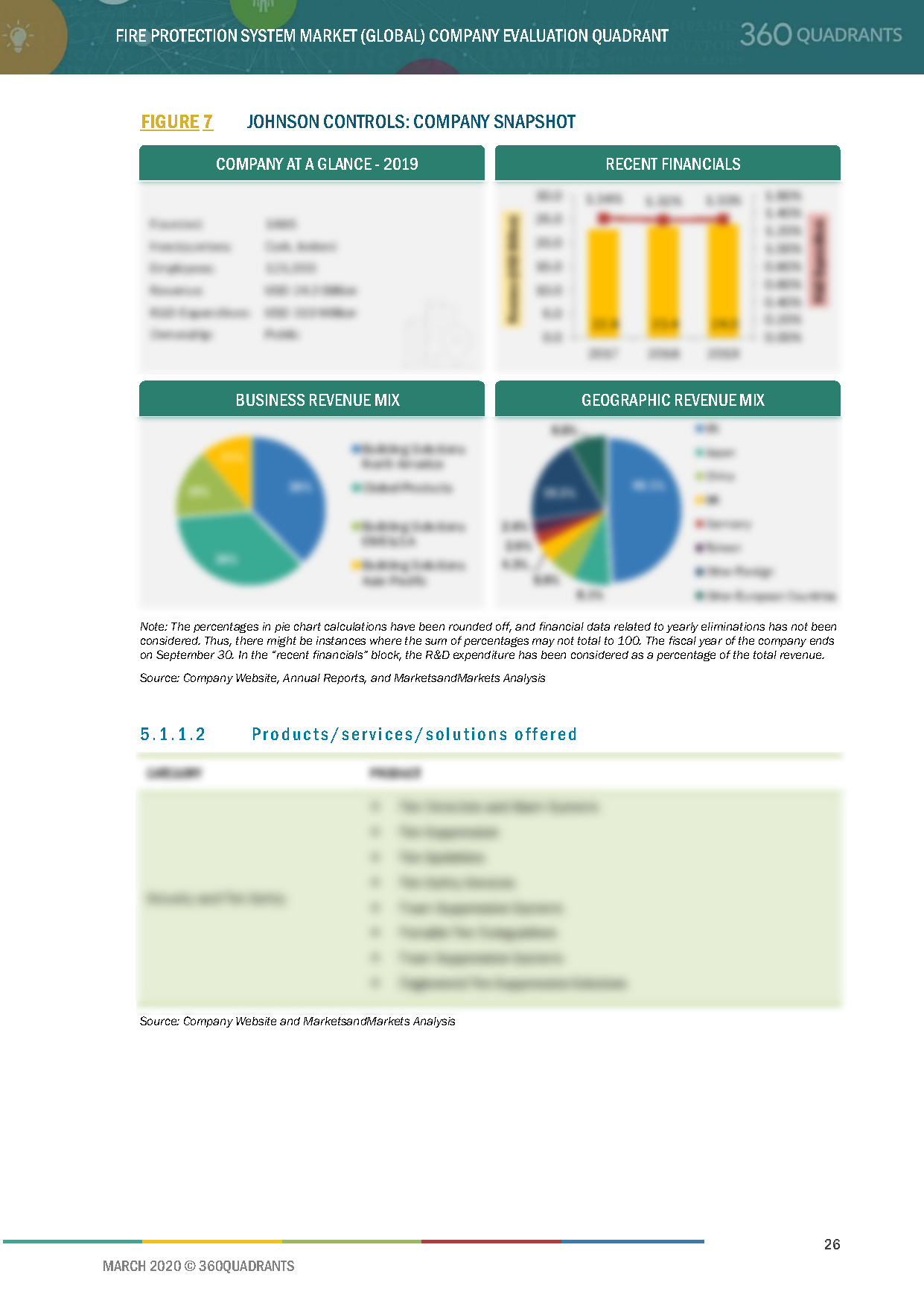
- Updated version of this Quadrant
- Different Company Evaluation Quadrant
- 'Startup Only' Company Evaluation Quadrant
- Region or Country specific evaluation
- Application or Industry specific evaluation ..Read More
- Submit a Briefing Request
- Question about our published research
- Request for evaluation of your organization for specific market
- Request for re-evaluation of Company Evaluation Quadrant ..Read More
